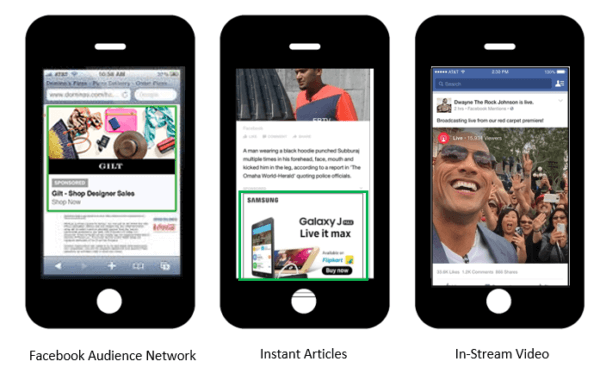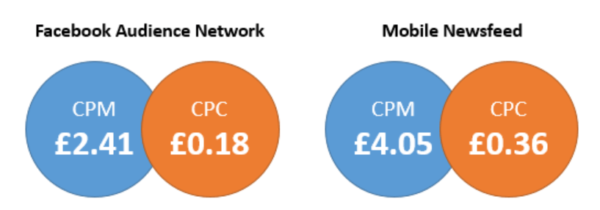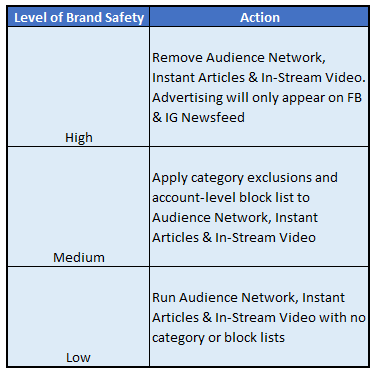Protecting your brand’s ads on Facebook — because there IS such a thing as bad publicity
Concerned about where your Facebook ads are appearing? Columnist Laura Collins discusses the issues surrounding brand safety on Facebook, along with some tips for organizations looking to protect themselves.
Caring about how you’re perceived by others is not a new concept. Even cavemen probably had moments of insecurity, pondering whether everyone thought their new animal skins looked good. And as long as brands have been around, there’s been a whole industry built around portraying the right manicured image to the world.
But the last year has seen the topic of brand safety pushed firmly to the front of everyone’s minds, in the digital space in particular (or in every space, if you’re Pepsi). In February, The Times published a damning article claiming that Google was funding terrorism by allowing YouTube ads to appear alongside extremist video content. Soon after, brands noticed their ads appearing on radical news sites via the Facebook Audience Network. Budgets were pulled; outrage was aired.
In this article, we’ll look more closely at the mechanisms which allow these reputation-damaging mistakes to take place on Facebook, and what advertisers and agencies can be doing to avoid them.
What are these risky placements?
In theory, brand safety shouldn’t be as much of a concern when advertising on social as it is on display. There are millions of different websites on which your display ad could appear, but if you’re advertising on Facebook, your ad would only appear on Facebook, right? Wrong.
If Facebook relied solely on the newsfeed and right-hand side rail as placements, they would be severely limiting their potential ad revenue and very quickly reach saturation. So, to solve this, they’ve found other sources of inventory.
- Facebook Audience Network (FAN): Launched in 2014, this is a network of mobile sites and apps which can be selected as a placement at ad set level, allowing your ads to appear outside of the Facebook ecosystem.
- Instant Articles: Instant articles are a mobile web format which allows news articles to load more quickly on Facebook. They were originally criticized for taking valuable ad revenue away from publishers, but Facebook have recently rolled out ad units at the bottom of articles.
- In-Stream Video: This format allows the delivery of 5- to 15-second mid-roll video ads within live and non-live videos
So far, so good — more placements mean more reach for your ads and more revenue for Facebook. But the issue with these placements is that while you can select whether to use them or not, to some degree that’s as far as your control goes. You can’t select on which videos or instant articles you want your ad to appear. Facebook’s targeting options are based on the user and thus, you could serve them an ad when they’re looking at some dodgy content.
You might be thinking, “Well, if a user is choosing to view extremist content, then they can’t justify being horrified when an ad pops up.” But all it takes to put the reputation of Facebook and their advertisers in jeopardy is one lucky journalist and a controversial screenshot. That Breitbart placement may have gotten five impressions out of a total of five million, but suddenly people are accusing you of funding extremism.
Why risk it?
The most obvious way to avoid such controversy is to not target these placements. If your ads are just appearing in people’s newsfeeds, then problem solved. But as well as limiting your reach, you could be missing out on some cost-effective inventory.
Looking at a cross-section of clients at Merkle|Periscopix, my employer, we can see that CPMs and CPCs overall are significantly cheaper on the FAN than in the mobile newsfeed.
And when we look at performance of video ads, in-stream ads offer significantly better view rates and cost-per-view.
Now there are two key points to consider here. First, this will vary for every client. It may be that FAN doesn’t prove more efficient for you, in which case it could make sense not to target that placement.
Second, with video performance, naturally in-stream video will be driving more views because your ad is appearing when someone is already watching a video. They must watch your ad to get back to the content they were interested in in the first place. But irritating though that may be for the user, the numbers don’t lie — you are driving a higher number of views.
How can you protect yourself?
Until last year, Facebook provided nothing in the way of brand protection. FAN was a completely blind network, with no ability to see where you were appearing, target specific placements, or even block unsavory ones.
Unsurprisingly, that didn’t go down very well with advertisers. And even before the recent uproar, Facebook were forced to provide more control. Last year, they released the ability to block certain categories of placements on FAN (e.g. Dating, Gambling) and to upload a block list of unwanted placements. So, you still couldn’t see where you were appearing, but at least you knew where you weren’t (baby steps).
But in the current climate, that was never going to cut it. In June, they announced they’ll be gradually rolling out further controls:
- Pre-campaign transparency: “We can finally see where our ads are appearing!” I hear you cry. Not quite — but you can see a list of where your ads could potentially appear across FAN, Instant Articles and in-stream ads. This is currently only available to a select group of advertisers using a video views objective.
- Blocking at account level: Previously, you’ve had to apply your placement block list to each individual ad set. This process will now be significantly simpler thanks to account-level blocking.
With these new controls in mind, at Merkle we’ve put together the following tiered Facebook brand safety levels:
Our standard best practice is to use Medium, as this provides maximum reach and efficiency whilst protecting our clients’ brands as much as possible.
I would never recommend using Low; diligence is always necessary to ensure that your ads are appearing against quality inventory. There isn’t a brand out there that can afford to show up against the type of content that has caused the recent controversy.
High level is an option for any brands that are particularly concerned about potential placements. In the wake of The Times’ article, some advertisers chose to pull all programmatic display spend and focus purely on targeted placements — an extreme approach, and one which I certainly wouldn’t recommend for the vast majority of advertisers, as it will limit reach dramatically. But for the likes of Pepsi, that might be a small price to pay to avoid any more bad press.
Opinions expressed in this article are those of the guest author and not necessarily MarTech. Staff authors are listed here.
Related stories
New on MarTech




